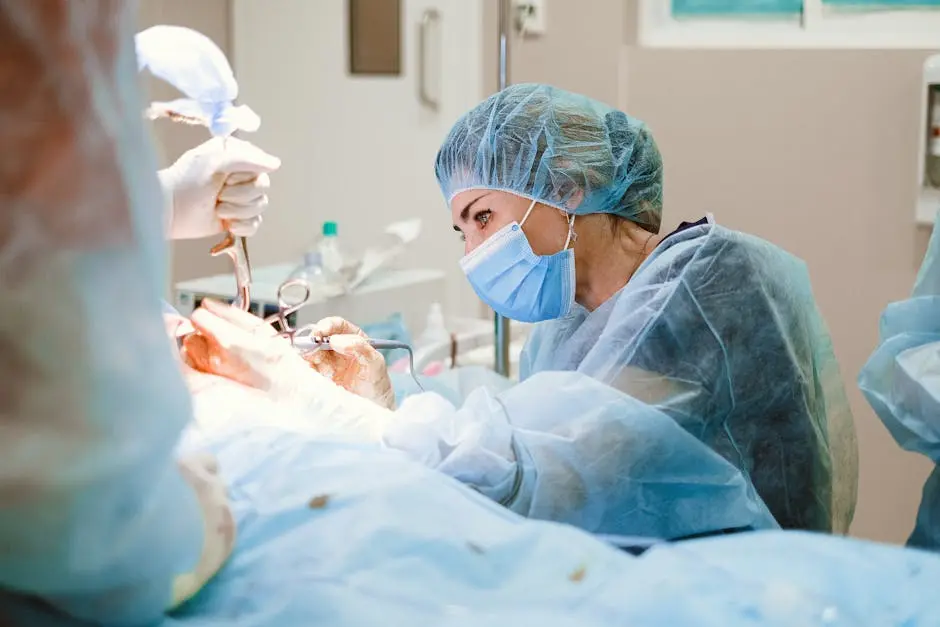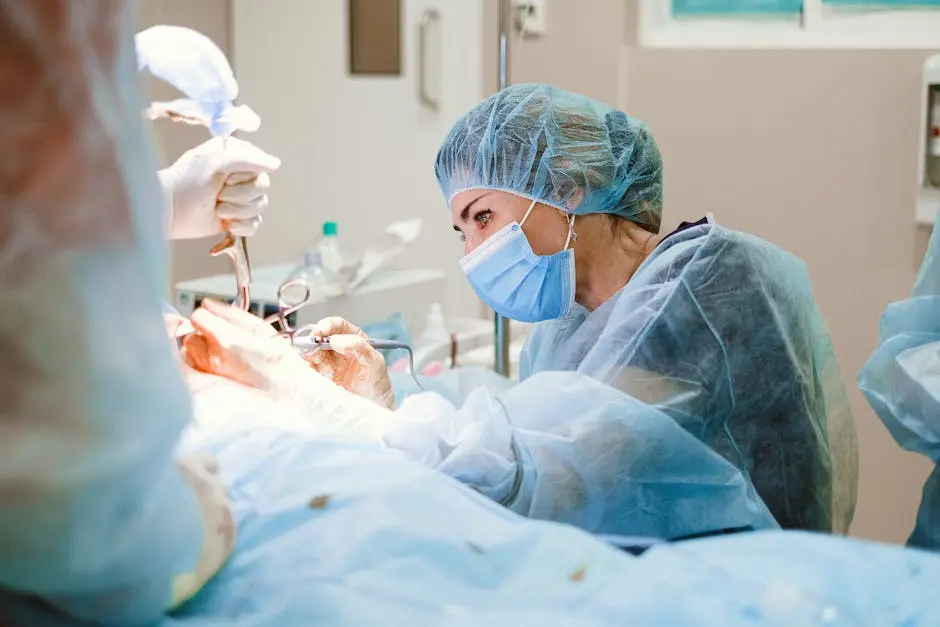Our Blog
The Role of Cholecystectomy in Treating Choledochal Cysts
March 29, 2025
Choledochal cysts are rare anomalies of the bile duct that can lead to serious complications if left untreated. One of the prevailing treatments for this condition is the cholecystectomy procedure. In this blog, we’ll explore what choledochal cysts are, the significance of cholecystectomy in their treatment, and how this procedure can help improve patient outcomes. Whether you’re a medical professional, a student, or someone searching for answers about this topic, this guide aims to provide clarity on the matter.
Understanding Choledochal Cysts
Choledochal cysts affect the bile duct and can lead to various health concerns. In this section, we will define choledochal cysts, explore their types, and discuss their potential complications.
To begin with, choledochal cysts are congenital dilations of the bile duct. They can occur in any part of the biliary tree, but they often manifest as a cystic enlargement at the extrahepatic duct. This condition is more commonly seen in children but can also affect adults. When these cysts obstruct bile flow, it can result in severe complications, ranging from recurrent abdominal pain to life-threatening infections.
When diagnosed early, treatment can significantly reduce the risks. There are several types of choledochal cysts, including type I, which are the most common and involve fusiform dilatation, and type IV, which may involve multiple cysts. Recognizing the type is crucial, as it dictates the management approach. For example, type IV cysts may need more complex surgical intervention. Understanding these distinctions sets the stage for discussing the necessary treatments, particularly the role of surgical interventions.
What is a Cholecystectomy Procedure?
A cholecystectomy is the surgical removal of the gallbladder. In this part, we will explain the procedure, its indications, and the different methods of performing it, including laparoscopic and open cholecystectomy.
In essence, the gallbladder’s main function is to store bile produced by the liver. This bile is crucial for digesting fats. However, in the case of choledochal cysts, the presence of the gallbladder can complicate matters. When these cysts lead to symptoms or complications, removing the gallbladder can be an effective treatment strategy. This highlights the importance of the cholecystectomy procedure in the overall management of these conditions.
Surgical techniques for cholecystectomy typically fall into two categories: laparoscopic and open surgery. Laparoscopic cholecystectomy is the preferred method these days due to its minimally invasive nature, causing less pain and quicker recovery times for patients. It involves making a few small incisions in the abdomen and using a camera to guide the surgery. On the other hand, open cholecystectomy may be performed in more complicated cases, allowing for direct access to the gallbladder. Understanding these techniques aids in appreciating why this procedure is so pivotal in treating choledochal cysts.
The Indications for Cholecystectomy in Choledochal Cysts
This section will delve into why cholecystectomy is recommended for patients with choledochal cysts, focusing on symptom relief and prevention of complications like pancreatitis and cholangitis.
Cholecystectomy becomes especially important when choledochal cysts lead to noticeable symptoms or risk factors for future complications. For instance, patients may experience severe episodes of pain, jaundice, or infection, all of which can warrant surgical intervention. By conducting a cholecystectomy, surgeons can alleviate these symptoms, providing immediate relief as well as preventing future occurrences.
Moreover, complications such as pancreatitis, which occurs due to bile duct obstruction, and cholangitis, a serious infection of the bile duct, can be dire. The cholecystectomy procedure not only addresses the cysts but also mitigates these risks effectively. In essence, understanding these indications underlines the necessity of surgical evaluation for patients diagnosed with choledochal cysts.
Risks and Benefits of Cholecystectomy
Like any surgical procedure, cholecystectomy comes with its own set of risks and benefits. We will explore the potential complications associated with the procedure as well as the significant advantages for patients with choledochal cysts.
On the benefits side, patients who undergo a cholecystectomy typically experience a significant reduction in symptoms related to choledochal cysts. This ultimately leads to an improved quality of life. Additionally, by removing the gallbladder, the procedure prevents the risk of further complications, which could result in more severe health issues and possibly require additional surgeries in the future.
However, it is essential to consider the risks involved. Some patients may face complications such as bleeding, infection at the surgical site, or injury to surrounding organs. While these risks are generally low, they are critical points for discussion between patients and healthcare providers. Weighing the risks against the benefits is vital in making informed decisions regarding whether to proceed with the cholecystectomy.
Post-Operative Care and Recovery
Understanding the recovery process after a cholecystectomy is crucial for patients and caregivers. This section will outline what to expect during recovery, including any lifestyle adjustments and follow-up care.
Post-operative care significantly influences the outcomes of a cholecystectomy. Initially, patients may experience mild discomfort, which can be managed effectively with medications. It’s also common for individuals to have dietary restrictions during the early recovery phase. Gradually reintroducing foods, especially more challenging-to-digest items like fatty foods, can be beneficial. Following the diet plan provided by healthcare providers is vital to ensure the gallbladder’s removal doesn’t disrupt regular digestive processes.
Moreover, regular follow-up visits are essential to monitor recovery progress and address any potential concerns promptly. In some cases, patients might experience changes in their digestion after surgery; for example, some may develop diarrhea or fatty food intolerance. This phase often requires adjustments, and ongoing communication with healthcare providers can help manage these changes effectively.
Long-Term Outcomes After Cholecystectomy
Finally, we’ll look at the long-term outcomes for patients who undergo cholecystectomy for choledochal cysts, discussing how this procedure can affect their health and quality of life in the years to come.
In the long run, many patients report a drastic improvement in their overall health and quality of life post-cholecystectomy. Removing the gallbladder typically alleviates symptoms associated with choledochal cysts, leading to fewer hospital visits and a more active lifestyle. This shift can be life-changing, allowing individuals to engage fully in their daily activities without the constant concern of cyst-related issues.
However, it’s vital to note that while most patients enjoy favorable outcomes, some may need ongoing support for digestive adjustments. These long-term considerations reinforce the importance of continuous healthcare follow-ups to ensure that any new symptoms or concerns are addressed promptly. Overall, understanding these outcomes solidifies the significance of the cholecystectomy procedure in treating choledochal cysts.
Wrapping Up the Importance of Cholecystectomy
In summary, cholecystectomy plays a vital role in the management of choledochal cysts, significantly reducing the risk of complications and improving the quality of life for patients. Understanding this procedure not only highlights its importance in treatment but also sheds light on the broader field of surgical interventions for biliary conditions. For anyone grappling with the implications of a choledochal cyst diagnosis, a thorough discussion with healthcare providers about the cholecystectomy procedure can pave the way for informed decisions and better health outcomes.
